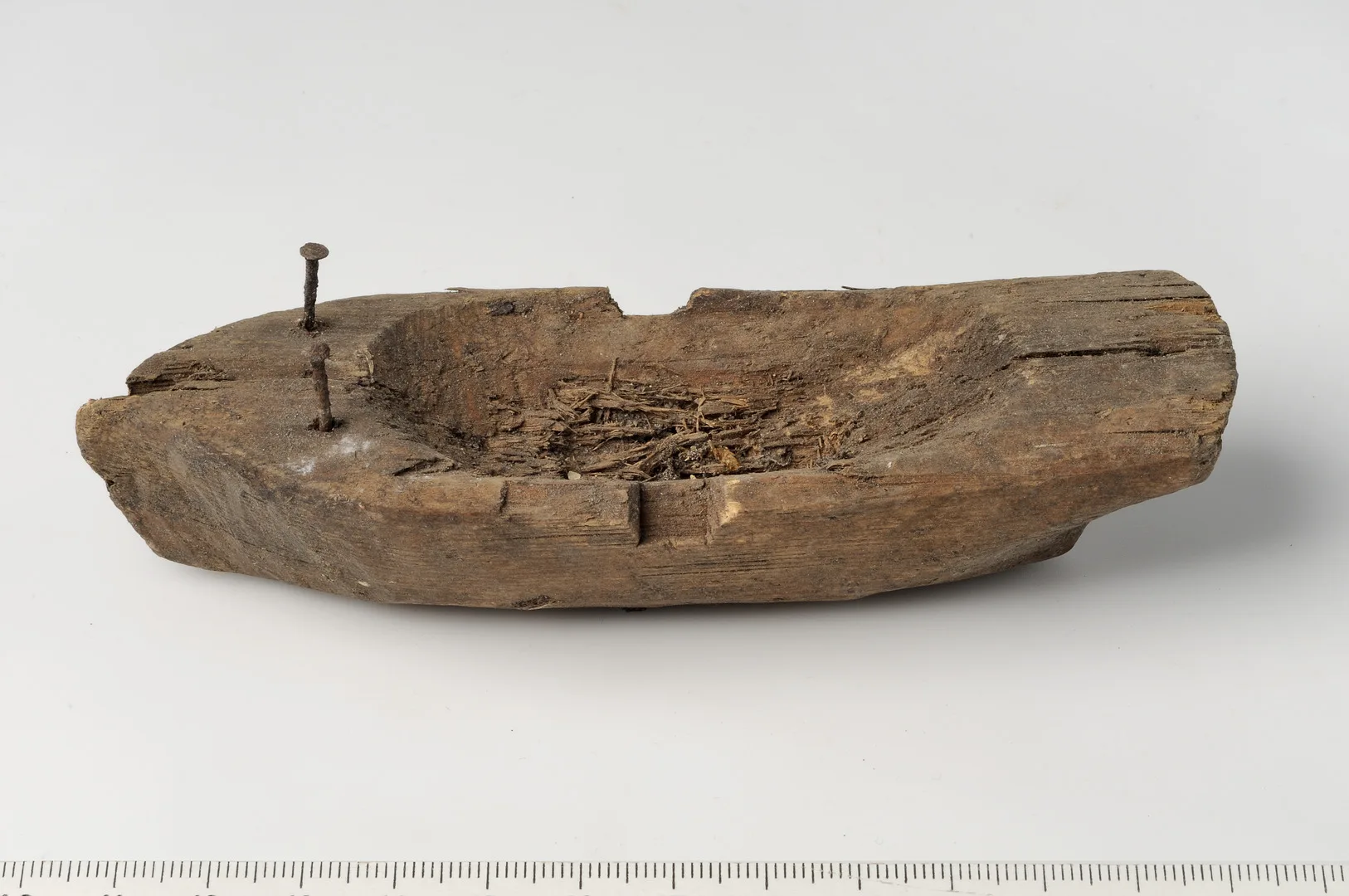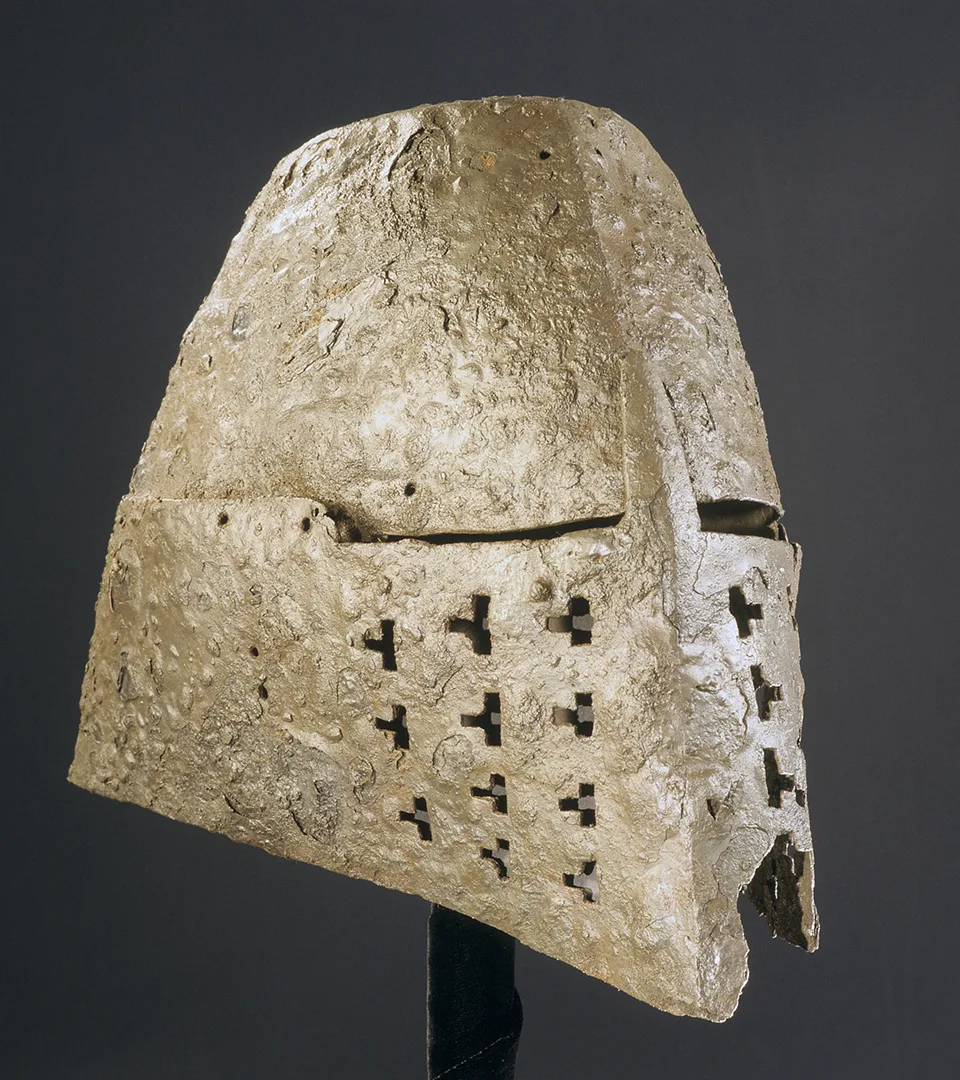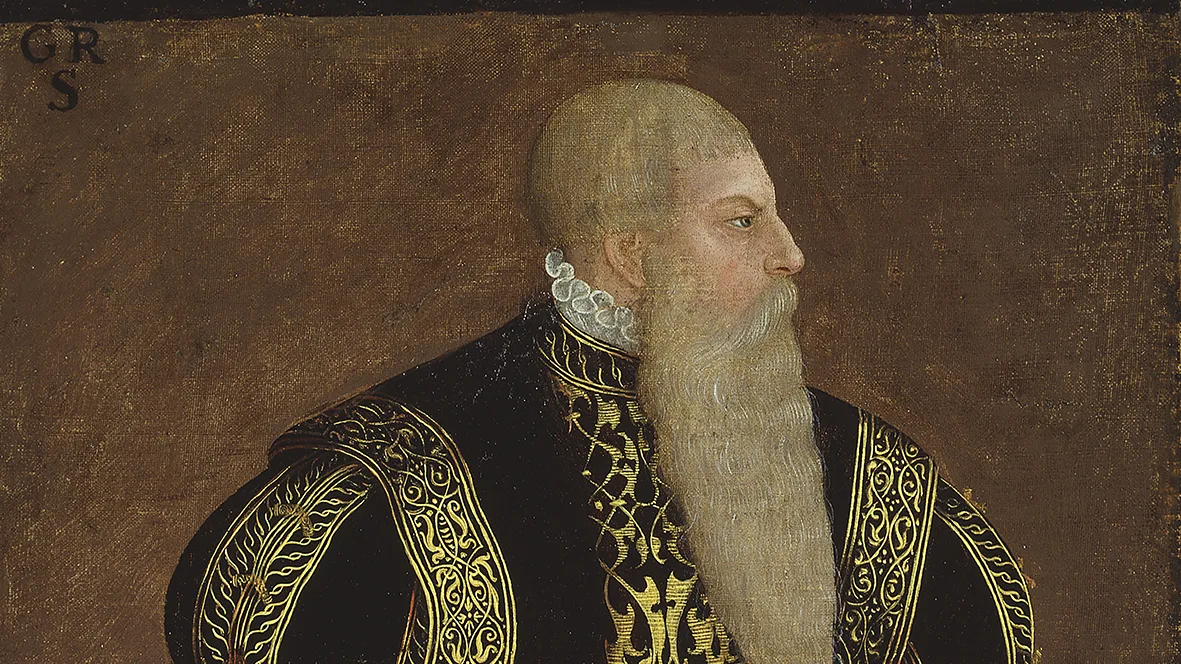Medieval Art: altarpieces
Viking Age
AD 800 – AD 1100
Middle Ages
AD 1050 – AD 1520
Modern Age
AD 1520 – AD 2025
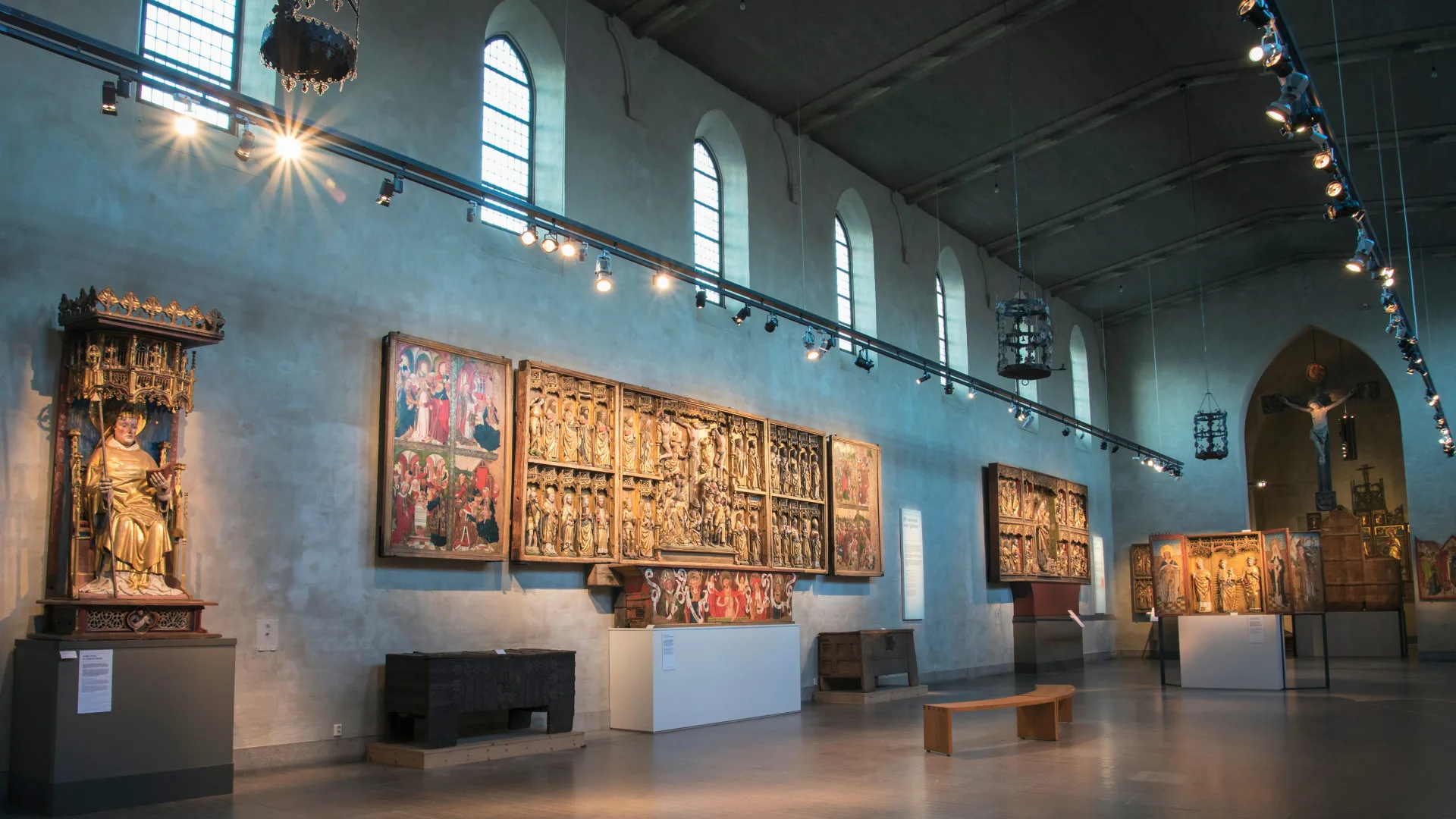
Altarpieces were a form of panel art, shaped like a cabinet with images. Many were imported from Northern Germany and Flanders (present-day Belgium and the Netherlands), where the art form reached a particularly high standard whereas others were made in Sweden.
The altar – from bare to ornate
In the earliest Christian period, the altar in Swedish churches had no decoration at all. Only the sacred books and communion vessels were placed upon it. After the service, candlesticks and crosses were stored away in a niche in the wall.
It was not until around the year 1000 that the altar began to be decorated. Its front was then adorned with figures in stone, wood, or metal. The altar slab itself could be of stone, such as finely polished limestone.

Altarpiece
From Vårdsberg church, Östergötland.
On view at Historiska museet in the exhibition Medeltida konst
Relics
In a small recess in the stone altar, it was common to keep relics, holy objects, often bones of saints. Every church was required to possess at least one relic. Over time, the storage of relics developed into costly reliquaries placed on top of the altar.
During the Gothic period, the so-called retable appeared: a screen placed at the back of the altar, divided into two or more sections and decorated with paintings or sculptures. This gradually developed into larger, increasingly elaborate altarpieces. Wings or doors were added, which could be opened or closed as required. Inside the cabinet were sculptures, while the doors bore paintings.

Reliquary
From Eriksberg church, Västergötland.
On view at Historiska museet in the exhibition Sveriges historia
Where were the altarpieces made?
The oldest preserved altarpieces in Swedish churches date from the 13th and 14th centuries. Many were produced locally in Sweden, though imports from the Continent were also common. Throughout the 15th century and the early decades of the 16th, large numbers arrived from Northern Germany, particularly Lübeck, which was famous for its high-quality works.
From the 1480s to the 1520s, commissions were also placed in Flanders (present-day Belgium and the Netherlands). Flemish altarpieces were large, with skilfully carved, richly gilded woodwork and clear, dramatic storytelling, which made them highly sought after. However, alongside this continental import, local production in Sweden continued, albeit strongly influenced by Northern German models.
Who commissioned the altarpieces?
Altarpieces were extremely costly, requiring powerful and wealthy patrons. Only the highest social classes could afford such gifts. Donors often ensured their generosity was recognised by including their coats of arms or portraits in the works.
Bishop Cordt Rogge of Strängnäs had his coat of arms placed on the two altarpieces he donated to Strängnäs Cathedral. Sten Sture the Younger commissioned an altarpiece with his likeness in full armour and the inscription: “O Mother of God, remember me.”
The gifts were made primarily as offerings for the salvation of the donor’s soul or that of a relative. But it was also a way to display power and wealth publicly.

Altarpiece
From Österåker church, Uppland.
On view at Historiska museet in the exhibition Medeltida konst
The imagery of the altarpieces
The pictures conveyed biblical stories to the faithful. Common themes included the Passion of Christ, episodes from the life of the Virgin Mary, and stories of apostles and saints.
When open, altarpieces displayed scenes from Christ’s Passion, designed to evoke emotion during Mass. When closed, they revealed paintings of Old Testament stories, which, according to medieval theology, foreshadowed the New Testament. For example, manna falling from heaven prefigured the Eucharist; Moses striking water from the rock symbolised Christ’s sacrifice; and the brazen serpent pointed towards the Crucifixion.
Images from the life of Christ
In the Middle Ages, the content of the image mattered more than its artistic form. Many altarpieces told narrative stories, allowing them to be grouped into three main types:
- The Passion of Christ: depicting his suffering and death, often used during Easter.
- The Nativity and infancy of Christ: from the Annunciation to the Baptism.
- The life of the Virgin Mary, often including the Holy Kinship: these are known as Marian altarpieces.
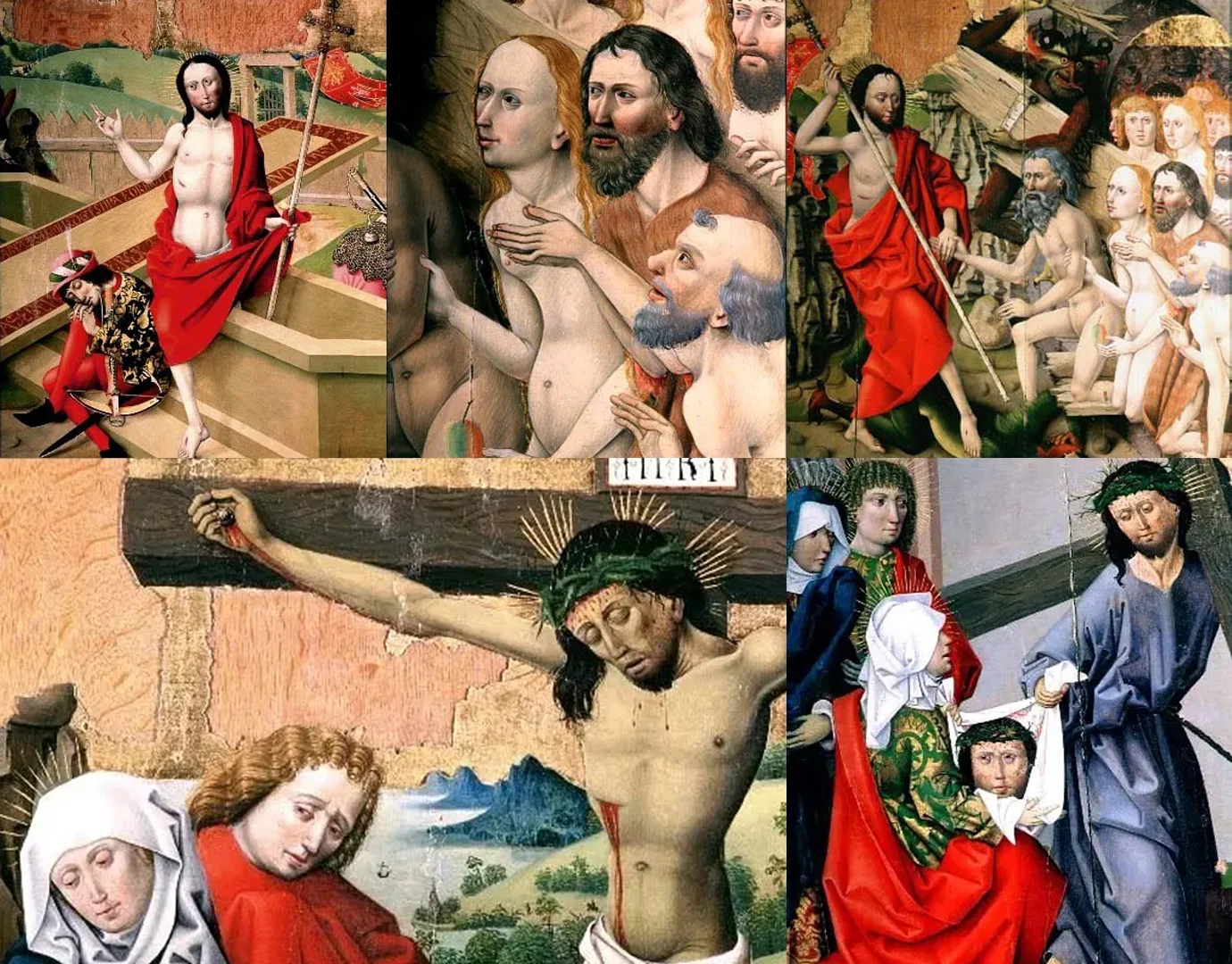
The cult of the Virgin Mary
In the late Middle Ages, a strong cult of the Virgin Mary developed. Instead of approaching God directly, many turned to Mary, who was believed to stand closer to humankind, having herself lived as a mortal. On the wings of altarpieces, it was common to find Old Testament scenes that foreshadowed events in the New Testament.
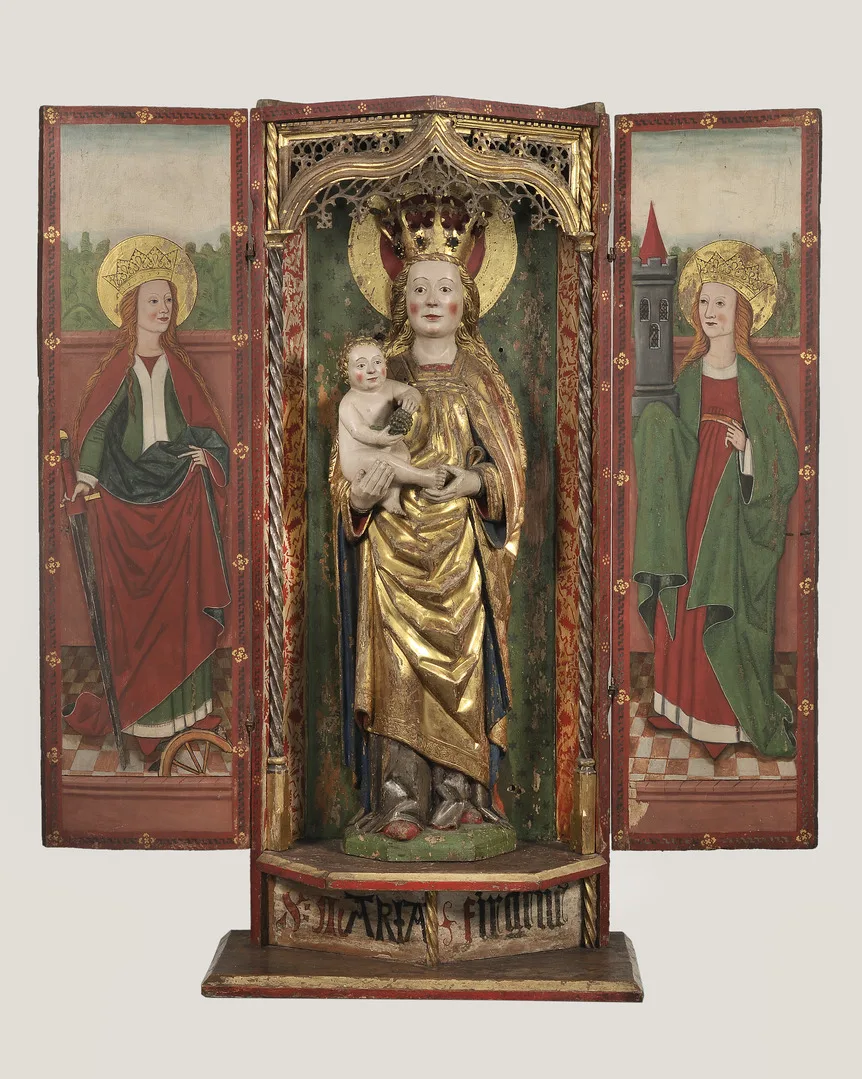
A Mary altar
From Haga church, Uppland.
On view at Historiska museet in the exhibition Medeltida konst
Interactive example: Husby-Långhundra altarpiece
This altarpiece from Husby-Långhundra Church in Uppland was made in a local workshop in the late 15th century. Its theme is the Virgin Mary, whose life is depicted in the central section and on the wings.

Saints
Other figures also appear in altarpieces: saints, apostles, church fathers, and martyrs. Saints were essential in medieval Christianity, both as intercessors before God and as miracle-workers. Among Nordic saints, St Bridget was the most important and is found in many Swedish altarpieces. Others include St Erik, St Eskil, St Sigfrid, and St Helena of Skövde.
